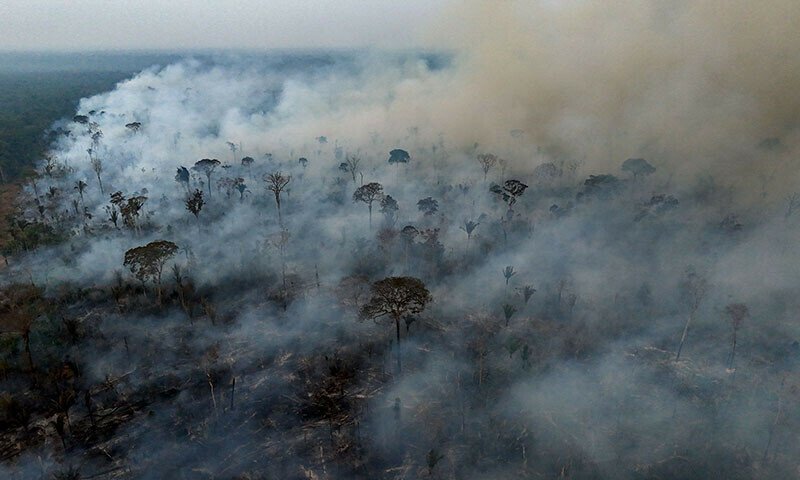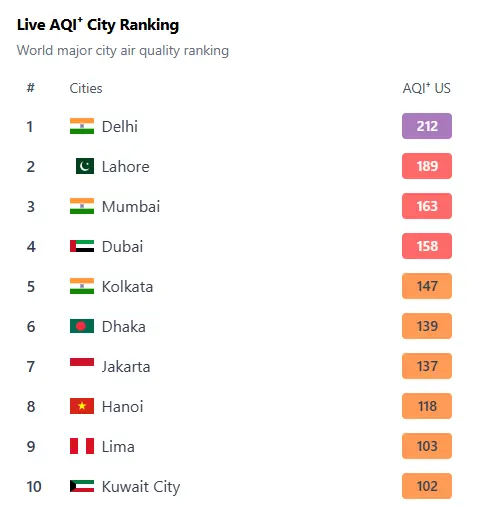As the death toll from the wildfires ravaging California rose, scientists confirmed Friday that the world just experienced the first year in which temperatures rose more than 1.5 degrees Celsius above pre-industrial times.
The milestone was confirmed by the European Union’s Copernicus Climate Change Service (C3S), which said climate change is raising the planet’s temperature to levels never before experienced by modern humans.
“The track record is just incredible,” said C3S director Carlo Buontempo. Reuterswhich describes how each month of 2024 was the warmest or second warmest for that month since records began.
The average temperature of the planet in 2024 was 1.6ºC higher than in the pre-industrial period of 1850-1900, C3S stated. Last year was the world’s warmest since records began, and the last ten years were the ten warmest.
Forest fires are one of the many disasters that climate change is making more frequent and severe. The fires threatening Los Angeles have killed at least ten people and devoured almost 10,000 structures.
But while the impacts of climate change now affect people from the richest to the poorest on the planet, the political will to address it has waned in some countries.
US President-elect Donald Trump, who will take office on January 20, has called climate change a hoax, despite the global scientific consensus that it is caused by humans.
Matthew Jones, a climate scientist at the University of East Anglia, said fire-prone weather, like that affecting California, will continue to increase, “as long as progress in addressing the root causes of climate change remains slow.”
The main cause of climate change is CO2 emissions from the burning of fossil fuels. The recent European elections have also shifted political priorities toward industrial competitiveness, with some EU governments seeking to weaken climate policies that they say hurt businesses.
EU Climate Commissioner Wopke Hoekstra said last year’s 1.5C rise showed that climate action must be prioritized. “It is extremely complicated, in a very difficult geopolitical environment, but we have no other alternative,” he said. Reuters.
The 1.5ºC milestone should serve as “a rude awakening for key political actors to get to work,” said Chukwumerije Okereke, a professor of climate governance at Britain’s University of Bristol.
The British Meteorological Office confirmed the probable exceedance of 1.5ºC in 2024, while estimating a slightly lower average temperature of 1.53ºC for the year. American scientists will also release their 2024 climate data today.
Governments pledged under the 2015 Paris Agreement to try to prevent average temperatures from rising above 1.5°C, to avoid more serious and costly climate disasters. The first year above 1.5ºC does not fail to meet that objective, which measures the longer-term average temperature.
Buontempo said rising greenhouse gas emissions meant the world was on track to soon surpass the Paris target, but it was not too late for countries to quickly reduce emissions to prevent warming from increasing further. to disastrous levels.
“It’s not a done deal. We have the power to change the trajectory,” said Buontempo.
In 2024, Bolivia and Venezuela suffered disastrous fires, while torrential floods hit Nepal, Sudan and Spain, and heat waves in Mexico and Saudi Arabia killed thousands of people.
Climate change is making storms and heavy rain worse because a warmer atmosphere can hold more water, causing heavy downpours. The amount of water vapor in the planet’s atmosphere reached a record high in 2024.
Atmospheric concentrations of carbon dioxide, the main greenhouse gas, reached a new high of 422 parts per million in 2024, C3S said.
Zeke Hausfather, a research scientist at the US nonprofit Berkeley Earth, said he expected 2025 to be among the hottest years on record, but probably not to top the rankings. “It will still be among the three warmest years,” he said.
That’s because while the biggest factor warming the climate is human-caused emissions, temperatures in early 2024 got an extra boost from El Niño, a warming climate pattern that is now trending toward its warmer counterpart. cold of La Niña.









